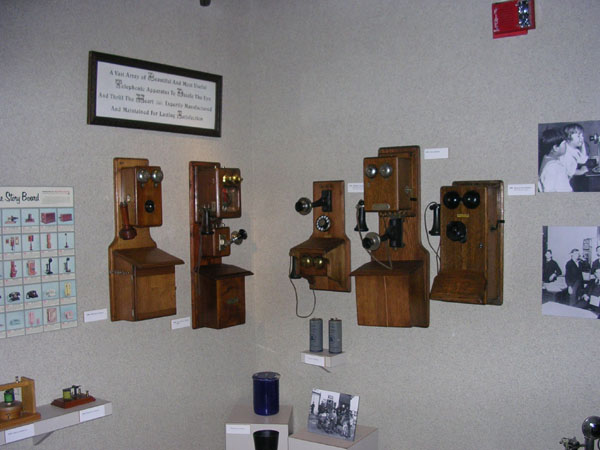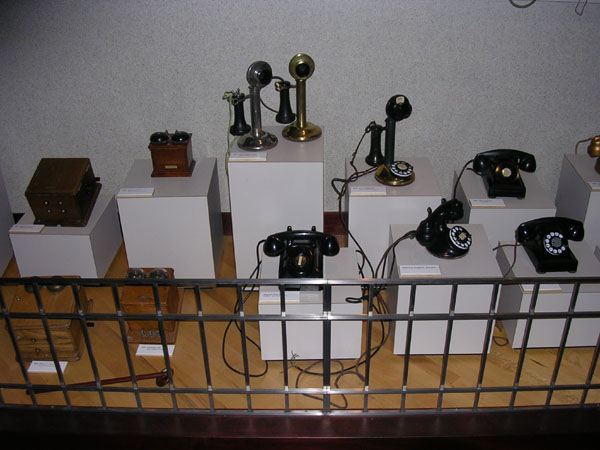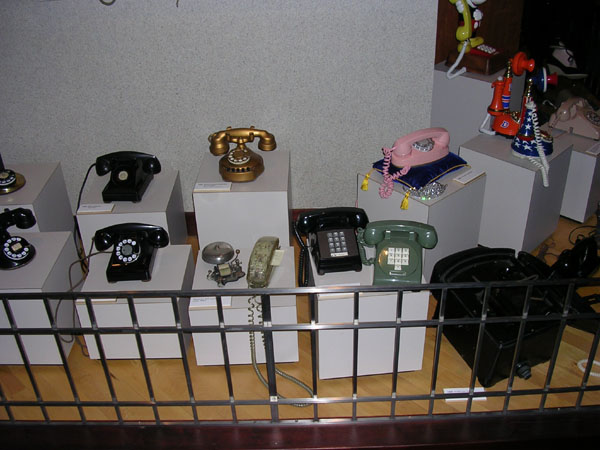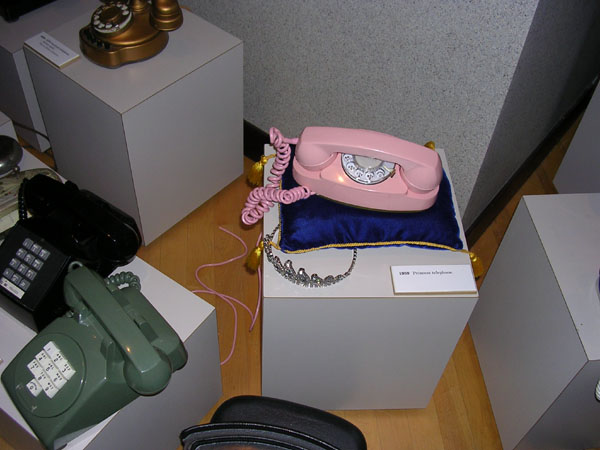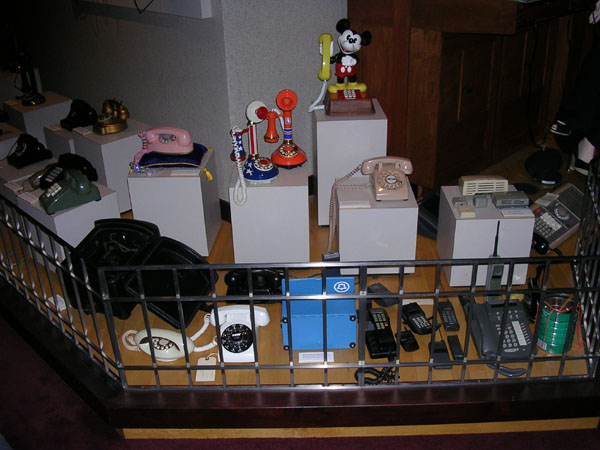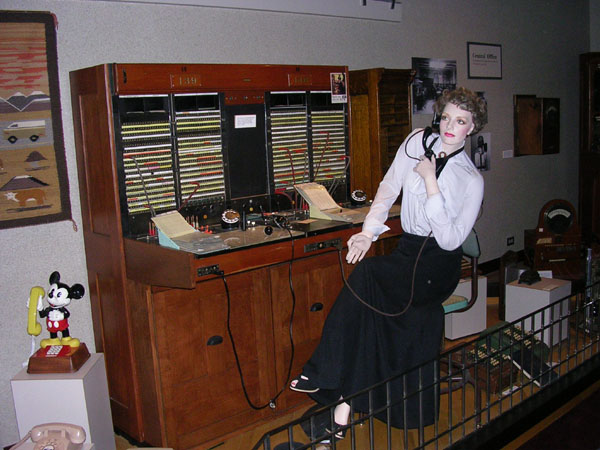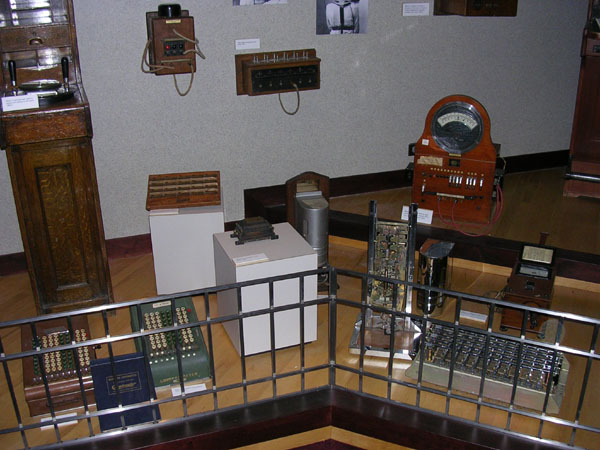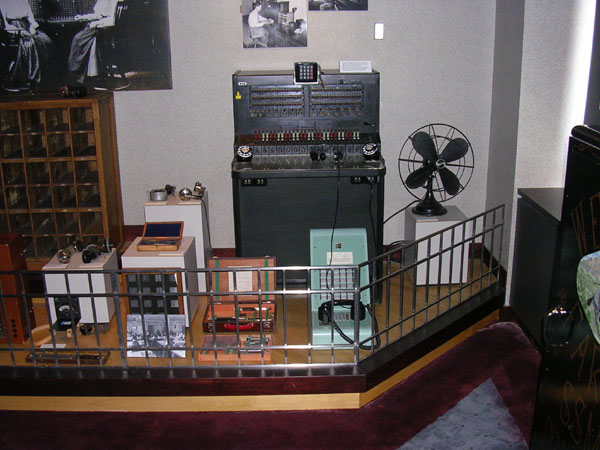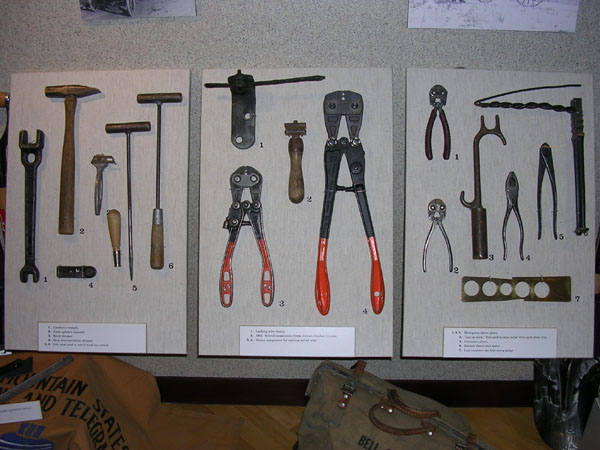Telecommunications History Group Resources
931 14th St. Historic Building
14th Floor Museum - Building Tour
In 1929, there was no 14th floor museum; the entire floor was given over to executive offices and the Board Room. Now, in addition to a few offices and departmental space, and of course the Board Room, the 14th floor houses a telephone museum. Originally set up by the Telephone Pioneers, this museum is now run by the Telecommunications History Group, Inc. Below are images from the museum.
There is a large collection of telephones showing the evolution of telephone technology starting with the first “working” telephone; several Magneto crank wooden phones–one with a Blake transmitter invented by Edison; and several Banjo back phones named after the shape of their back boards.
Original switches in this building brought dial phones to Denver. (Two examples are in the museum; a candlestick dial phone, and a French dial cradle phone made of bakelite, an early plastic.)
A unique working phone was used to test the push-button cascade dial design. Its buttons were too large and women caught their fingernails on the step up between the keys. It failed the test.
The dial Princess Phone® (introduced in 1959) and rhinestone tiara are artifacts from the promotion of this phone by 1958 Miss America, former Miss Colorado, Marilyn VanDerbur. The phone came in six colors with its marketing slogan, “It’s little, it’s lovely, it lights.” In fact it was too light, so after the Denver test market, a steel plate was added to the phone’s base.
A series of cell phones show the evolution of cell phone technology from a phone the size and weight of a brick to a palm phone.
The last cordboard (a station attended by an operator who plugged in wires to complete calls) in Mountain Bell was removed from service in 1983 in Billings, Montana, and shipped to this museum. Since then it has starred in television programs on all major networks.
Several switches are on display, including the one used to complete dial phones at the building’s opening in 1929.
President Eisenhower’s summer White House communications system on display enabled the president to talk to any telephone in the world at any time. This little cord board included all necessary technology to receive calls from around the world.

